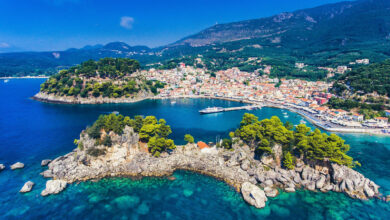Vietnam is a country located in Southeast Asia, bordered by China to the north, Laos to the northwest, and Cambodia to the southwest. With a population of approximately 97 million people, it is the 13th most populous country in the world. The country has a rich history and a unique culture, shaped by its location at the crossroads of Southeast Asia, as well as its experiences with colonization and war.
Vietnam has a long and storied history, dating back to the early centuries AD when the country was part of the ancient kingdom of Van Lang. Over the centuries, Vietnam was ruled by various dynasties, including the powerful Nguyen dynasty in the 19th century. However, the country was greatly impacted by colonialism, first by the French in the late 19th and early 20th centuries, and later by the Japanese during World War II.
One of the defining events in modern Vietnamese history was the Vietnam War, which took place from 1955 to 1975. The conflict was a result of the division of the country into two separate states, North Vietnam and South Vietnam, after the fall of the French colonial government. The war was characterized by intense fighting between the North Vietnamese army, backed by the Soviet Union and China, and the South Vietnamese government, supported by the United States and other Western countries. The war resulted in significant loss of life, both military and civilian, as well as widespread destruction of infrastructure and displacement of people.
Despite the difficulties of the war, the Vietnamese people have shown remarkable resilience and determination to rebuild their country and move forward. Since the end of the conflict, Vietnam has undergone significant economic development and has emerged as a key player in the region. Today, the country has a rapidly growing economy, driven by exports and tourism, and is considered one of the fastest-growing economies in the world.
Vietnamese culture is deeply influenced by its long history and the experiences of its people. The country is known for its traditional handicrafts, such as ceramics, lacquerware, and textiles, as well as its delicious cuisine, which is known for its use of herbs and spices and its focus on fresh ingredients. Vietnamese people are also proud of their rich artistic heritage, including traditional dance and music, as well as the country’s vibrant contemporary art scene.
In conclusion, Vietnam is a country with a rich and complex history, shaped by its location at the crossroads of Southeast Asia, as well as its experiences with colonization and war. Despite the difficulties of the past, the Vietnamese people have shown remarkable resilience and determination in building a better future for themselves and their country. Today, Vietnam is a thriving nation with a rapidly growing economy and a rich cultural heritage that is a source of pride for its people.
Best Time to Visit Vietnam
The best time to visit Vietnam depends on personal preferences and what you would like to see and do in the country. However, here are some general guidelines:
- North Vietnam: The best time to visit Northern Vietnam is from September to November, or from March to April. During these months, the weather is relatively dry and cool, making it ideal for outdoor activities and sightseeing.
- Central Vietnam: The best time to visit Central Vietnam is from February to April when the weather is dry and temperatures are comfortable. However, it is worth noting that this is also the peak tourist season, so be prepared for crowds at popular attractions.
- South Vietnam: The best time to visit Southern Vietnam is from December to April when temperatures are warm and relatively dry. However, it is important to keep in mind that this is the peak tourist season and temperatures can be quite hot.
Overall, it is important to keep in mind that Vietnam is a large country with a wide range of climates, so the best time to visit will depend on your personal preferences and the specific region you plan to visit. If you plan to travel during the monsoon season, it is advisable to bring appropriate clothing and be prepared for rain.
Average Temperature in Vietnam
The average temperature in Vietnam varies greatly depending on the region and the time of year. Vietnam is a long and narrow country, with a tropical climate in the south and a subtropical climate in the north.
In general, temperatures in Northern Vietnam tend to be milder, with average temperatures ranging from 15°C to 25°C (59°F to 77°F). The winter months, from November to February, are the coldest, with average temperatures of 15°C to 20°C (59°F to 68°F). The summer months, from May to September, are the warmest, with average temperatures of 25°C to 30°C (77°F to 86°F).
In Southern Vietnam, temperatures are warmer and more tropical, with average temperatures ranging from 25°C to 35°C (77°F to 95°F). The coolest months are from December to February, with average temperatures of 25°C to 30°C (77°F to 86°F), while the hottest months are from April to September, with average temperatures of 30°C to 35°C (86°F to 95°F).
Overall, it is important to keep in mind that temperatures in Vietnam can vary greatly depending on the region and the time of year, so it is best to check the forecast for your specific destination before you travel.
Credits
Photo: Tràng An, Ninh Bình, Vietnam. Photo by: Rowan Heuvel on Unsplash



